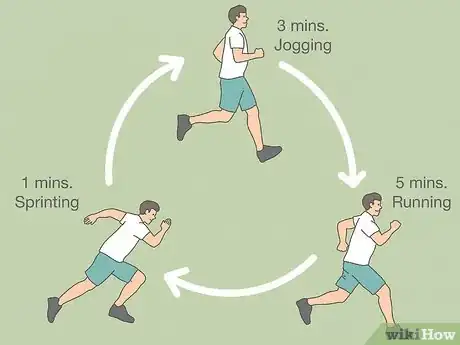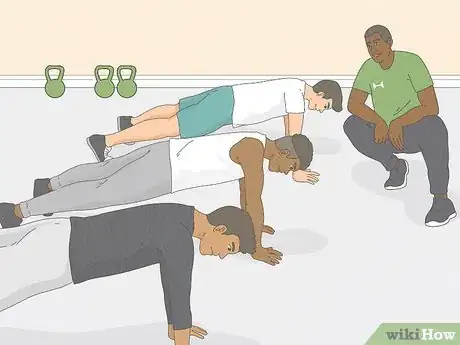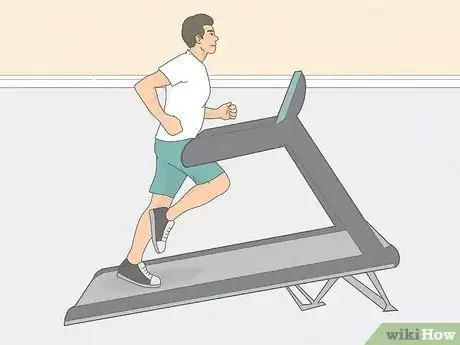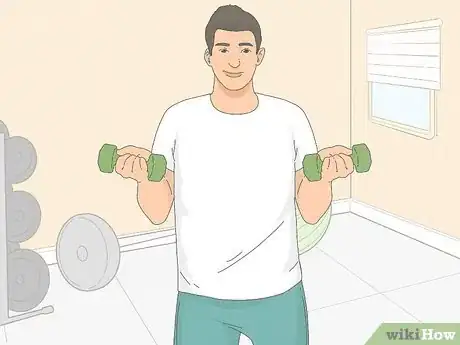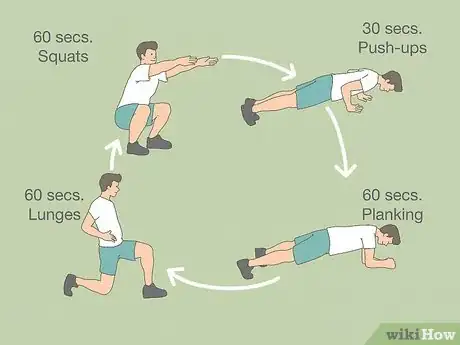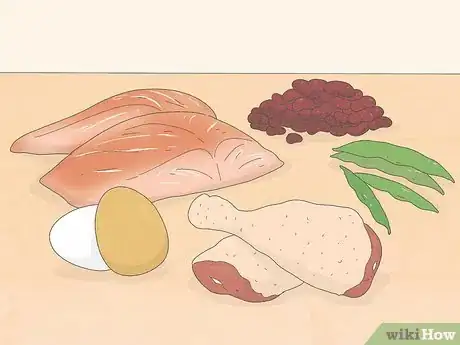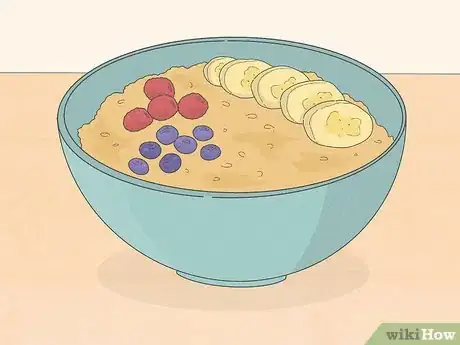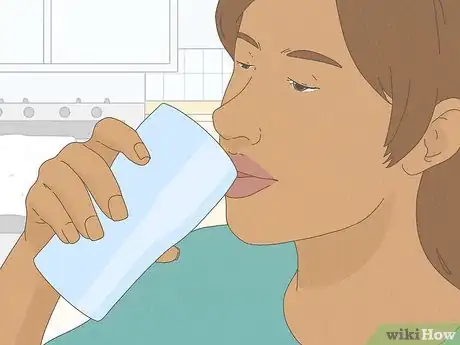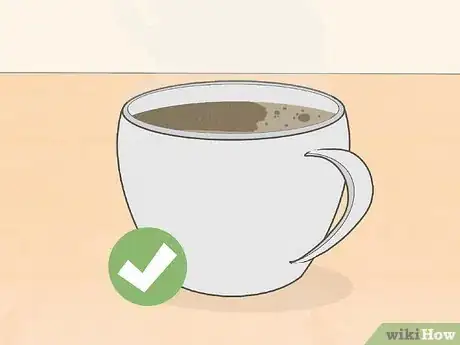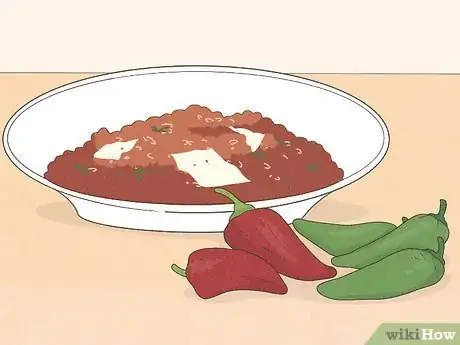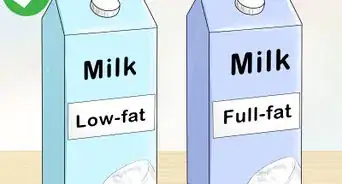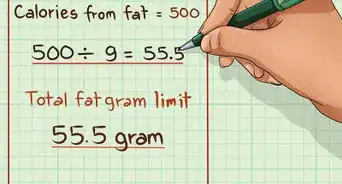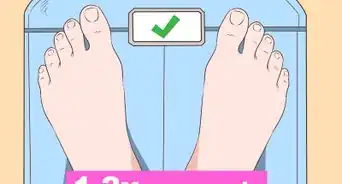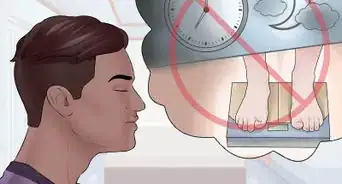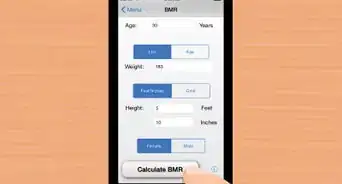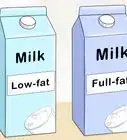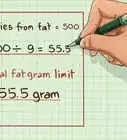This article was co-authored by Christopher Carreiro. Christopher Carreiro is a Certified Personal Trainer and the Founder of Aum Training Center in Boston, Massachusetts. With over 10 years of experience, Chris specializes in helping busy people look and feel years younger. He does so by integrating holistic nutrition and mindfulness into life-changing transformation programs. In addition to being a Precision Nutrition Level 1 Certified Coach, Chris is a Certified Strength and Conditioning Specialist (CSCS). He also has a Master’s degree in Psychology with a specialization in life coaching.
There are 13 references cited in this article, which can be found at the bottom of the page.
This article has been viewed 34,324 times.
Burning 1,000 calories at the gym will definitely work up a sweat, but if you try, you can get the job done. The number of calories you burn while exercising depends on how much you weigh and your metabolic rate, so you’ll need to take those factors into consideration. The best ways to blast calories fast are going to be by doing lots of cardio, interval training, and strength (or resistance) training. Whether you want to lose weight, tone up, or increase your cardiovascular fitness, you should always check in with your doctor before starting any new fitness regimen.
Steps
Doing Intensive Exercise
-
1Perform interval training with sprints. Circuit training is highly effective in burning lots of calories in a short period of time. So if you can’t spend a lot of time at the gym, adding in 30-second sprints to your running routine will blast more calories than running at a steady pace. If you’re a beginner or have a condition that prevents you from high-intensity exercise, lower the intensity for each segment—that is, jog instead of run and run instead of sprint. You’ll need to extend the duration of the workout to burn close to 1,000 calories. The following 30-minute routine is a standard example of interval training, so you may need to adjust the length or intensity to burn 1,000 calories:[1]
- 3 minutes of jogging (warm-up)
- 5 minutes of running
- 1 minute of sprinting
- 3 minutes of running
- 1 minute of sprinting
- 5 minutes of running
- 1 minute of sprinting
- 3 minutes of running
- 1 minute of sprinting
- 3 minutes of running
- 3 minutes of jogging (cool down)
- 1 minute of brisk walking (final cool down)
- Depending on your weight and fitness level, do this routine once or twice to burn 1,000 calories.
-
2Sign up for a group class at your local gym. Exercise classes are a great option if you struggle to stay motivated for longer, more intense workouts. They’re also great if you’re not sure where to start. Instructors can guide you through various moves and keep you amped up to sweat. Look for classes at your local gym according to your current level of fitness.[2]
- If you are new to exercise, start with a beginner’s course then, work your way up to intermediate and advanced courses over the next month or two.
- Look for classes that you’ll enjoy, like dancing, spinning, or kick-boxing.
- Sign up with a friend or family member to keep both of you motivated and accountable.
Advertisement -
3Add vertical resistance to burn more calories. Walking, jogging, or running at an incline burns more calories than on a flat surface. Climbing stairs or using a stair step machine is a great way to blast calories, build muscle, and tone your lower body. Incorporating hills will also lessen the strain on your knees. Feel free to work vertical resistance training into every workout session or just once or twice a week. Try the following 20-minute treadmill routine:[3]
- 2 minutes of walking at 5% incline (warm-up)
- 3 minutes of speed walking at 7% incline
- 2 minutes of moderate walking at 12% incline
- 2 minutes of jogging at 7% incline
- 2 minutes of jogging at 10% incline
- 2 minutes of moderate walking at 15% incline
- 2 minutes of jogging at 10% incline
- 2 minutes of speed walking at 12% incline
- 3 minutes of walking at 5% incline (cool down)
- If you have to lean forward or hold onto the rails, lower the incline to keep proper form and prevent injury.
- Depending on your current weight and level of fitness, repeat this routine 2 to 3 times to burn 1,000 calories.
-
4Perform roughly 30 minutes of strength training 3 times a week. People who do a combination of strength training and aerobic exercise burn more calories each workout. The more muscle you have, the more calories you’ll burn doing just about anything—even sitting! Alternate between upper body and lower body strength training to allow your muscles time to recover.[4]
- For instance, perform squats, lunges, deadlifts, and step-ups on Mondays and do bicep curls, lat raises, tricep dips, and shoulder presses on Wednesdays.
-
5Perform circuit training with less resting time between sets. Decreasing your resting time between resistance and aerobic sets keeps your heart rate elevated and will help you burn more calories in less time. Alternate between upper and lower body moves to give your muscles a short break between sets. You can do these intense circuits any time you strength train but you may want to limit it to once or twice a week so your muscles can recover.[5]
- For example, perform 60 seconds of squats followed by 30 seconds of pushups. Then do 60 seconds of planking and 60 seconds of lunges. Repeat this routine for 3 to 6 rounds.
- Include both cardio and strength training into your circuit routines. For instance, jump rope for 60 seconds between each set of upper or lower body weight training.
-
6Run at a pace of 8 mph for 60 minutes during your cardio workout. Running for a whole hour at a speed of 8 mph burns around 1,000 calories if you weigh 200 pounds (91 kg). If you weigh less but still want to keep your time at the gym around an hour long, you may need to run a bit faster. Alternatively, you can run for a longer period of time at a slower pace. If you weigh more, you’ll burn more calories due to your basal metabolic rate (BMR), so you can run at a slower pace or for less time.[6]
- Men’s BMR = 66 + (13.8 x weight in kg) + (5 x height in cm) - (6.8 x age in years).
- Women’s BMR = 655 + (9.6 x weight in kg) + (1.8 x height in cm) - (4.7 x age in years).
- If you’re exercising on a treadmill, enter your weight into the machine (if applicable) to track how many calories you’re burning.
- Use an online calorie-burn calculator to find out how many calories you’re burning doing various exercises. You’ll need to enter your age, height, and weight, and the type and duration of your exercise.
-
7Use an app to track how many calories you’re burning. Activity-tracking or fitness apps are a great way to keep you motivated and log your progress at the gym. My Fitness Pal, Fitbit Coach, and Keelo are just a few apps (among many) that you can choose from. Some workout apps will offer routines based on how many calories you want to burn and will tailor your workout to that goal.[7]
- Keep in mind that calorie-tracking apps aren’t always accurate, even with the correct biometrics (your age, height, and weight).[8]
- Some apps (like FIT Radio and RockMyRun) will tailor your workout music to your pace to keep you amped up and in the zone.
Fueling Your Workouts
-
1Eat lean protein at each meal. Protein helps build lean muscle mass, which means you’ll be burning more calories throughout the day. Choose lean proteins like poultry, fish, lean ground beef, eggs, beans, and legumes. Eat 1.6 to 1.8 grams of protein for every 1 pound of bodyweight to build muscle.[9]
- For example, if you weigh 180 pounds (82 kg), aim to get 10.1 oz (288 g) to 11.4 oz (324 g) of protein each day.
-
2Power up with macronutrients before your workouts. Eating complex carbohydrates, protein, and a little bit of fat before your workouts will keep you energized the whole way through. Choose whole grains like rice, quinoa, and oats and stick to healthy fats like avocado, olive oil, and nuts.[10]
- Eat snacks and small meals 1 to 3 hours before a workout to help you power through it. For instance, have a 200 to 250 calorie smoothie or a piece of fruit with 2 tbsp. (28 g) of nut butter.
- Avoid eating larger or heavier meals (over 600 calories) 1 or 2 hours before a workout so you don’t get cramps or feel sluggish. For example, eating a large portion of meaty curry with rice and dessert is not a good idea before hitting the gym.
-
3Drink water before, during, and after your workout. Burning 1,000 calories means you’ll be sweating a lot, so it’s important to replace all that lost water. Aim to drink a number of fluid ounces equal to half your weight in pounds. For instance, if you weigh 180 pounds (82 kg), you should be drinking 90 fluid ounces (2,700 mL) of water daily—and more on the days that you exercise intensely.[11]
- Drink at 2 cups (470 mL) to 3 cups (710 mL) of water within 2 to 3 hours before your workout and within 2 to 3 hours after your workout.
- Drink 1⁄2 cup (120 mL) to 1 cup (240 mL) of water every 20 minutes of your workout.
- If you’re exercising for over an hour, electrolyte-rich sports drinks are a good option to stay hydrated and give you more energy mid-way through.
-
4Caffeinate about 30 minutes before you exercise. Drinking 1 or 2 cups of coffee has shown to increase the number of calories you burn during a workout. Plus, you’ll get a boost of energy to help you power through more intense routines. Just avoid sugary blended drinks as these might cause you to have a sugar crash.[12]
- If you don’t drink coffee, opt for yerba mate or black, green, or white tea.
-
5Eat foods containing capsaicin to boost your metabolic burn. Capsaicin stimulates your metabolism, causing you to burn more calories in and out of the gym. Chili peppers, jalapeño peppers, red peppers, and cayenne are all great sources of capsaicin.[13]
- Turmeric spice also contains capsaicin and will help with any sore muscles or inflammation that might result after a hard workout.
- If you’re sensitive to spicy foods, avoid eating them at all. Turmeric, ginger, and garlic have similar properties, so feel free to eat those instead spicy foods.
- Avoid eating spicy foods within 2 hours of exercising. Working out with heartburn and indigestion is uncomfortable and might cause you to abandon your workout.
Expert Q&A
-
QuestionWhat exercises burn the most calories?
 Christopher CarreiroChristopher Carreiro is a Certified Personal Trainer and the Founder of Aum Training Center in Boston, Massachusetts. With over 10 years of experience, Chris specializes in helping busy people look and feel years younger. He does so by integrating holistic nutrition and mindfulness into life-changing transformation programs. In addition to being a Precision Nutrition Level 1 Certified Coach, Chris is a Certified Strength and Conditioning Specialist (CSCS). He also has a Master’s degree in Psychology with a specialization in life coaching.
Christopher CarreiroChristopher Carreiro is a Certified Personal Trainer and the Founder of Aum Training Center in Boston, Massachusetts. With over 10 years of experience, Chris specializes in helping busy people look and feel years younger. He does so by integrating holistic nutrition and mindfulness into life-changing transformation programs. In addition to being a Precision Nutrition Level 1 Certified Coach, Chris is a Certified Strength and Conditioning Specialist (CSCS). He also has a Master’s degree in Psychology with a specialization in life coaching.
Certified Personal Trainer Jump-roping, sprinting, and using a rowing machine are all great for burning a lot of calories. You can also burn 1000 calories in 1 hour doing kettlebell workouts.
Jump-roping, sprinting, and using a rowing machine are all great for burning a lot of calories. You can also burn 1000 calories in 1 hour doing kettlebell workouts.
Warnings
- Talk to your doctor before starting any new exercise program.⧼thumbs_response⧽
- Stay hydrated at the gym.⧼thumbs_response⧽
- If you feel lightheaded, dizzy, faint, or short of breath, stop exercising immediately.⧼thumbs_response⧽
References
- ↑ https://www.ncbi.nlm.nih.gov/pmc/articles/PMC4657417/
- ↑ https://www.health.harvard.edu/heart-health/the-perks-of-group-fitness-classes
- ↑ https://www.health.harvard.edu/staying-healthy/walking-your-steps-to-health
- ↑ https://www.ncbi.nlm.nih.gov/pmc/articles/PMC3544497/
- ↑ https://www.ncbi.nlm.nih.gov/pmc/articles/PMC5685083/
- ↑ https://www.ncbi.nlm.nih.gov/pubmed/22446673
- ↑ https://www.pcmag.com/article/334976/the-best-fitness-apps-for-2019
- ↑ https://med.stanford.edu/news/all-news/2017/05/fitness-trackers-accurately-measure-heart-rate-but-not-calories-burned.html
- ↑ https://www.health.harvard.edu/blog/how-much-protein-do-you-need-every-day-201506188096
